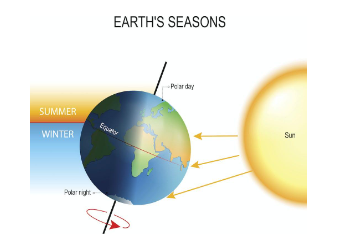

20th June 2023 (7 Topics)
Context
A recent study has highlighted that, the Groundwater pumped up from the earth and moved elsewhere for humans activities, resulted in the earth’s axis tilting nearly 80 cm to the east.
- Scientists estimated that nearly 2,150 billion tonnes of groundwater have been pumped and drained into the oceans.
About
Highlights of the study:
- Background:
-
- A study published in 2016, showed that the movement of water around the world contributed to the wobble in the earth’s axis.
- But the role of groundwater hadn’t been considered before.
- However the recent study found that nearly 2,150 billion tonnes of groundwater has been pumped and drained into the oceans in 1993-2010, making it one of the important contributors to global sea-level rise.
- The earth’s rotational pole tends to vary in a circular pattern several meters wide every year due to the weather, seasonal changes, the molten core, and even powerful hurricanes.
- The scientists also mentioned that the location of groundwater depletion is important to identify the extent of tilt.
- Using this model, they found that pumping groundwater from mid-latitude areas would impact the drift the most.
- They also found that the most amount of groundwater redistribution took place in northwest India and western North America, both situated at mid-latitudes.
Earth’s rotation and tilt:
- Earth is tilted on a 23.5° axis relative to our orbit around the sun.
- Because of this tilt, we are able to experience winter, autumn, summer and spring.
- The earth’s rotational pole is the point along which the planet rotates.
- This point, which lies on the axis of rotation of the planet, moves in a process called polar motion.
- In other words, the location of the earth’s pole varies relative to the earth’s crust.
Status of India’s groundwater profile:
- Groundwater depletion has been a particular concern across India since the last decade.
- About 95% of India’s groundwater depletion was traced to north India where groundwater is primarily used for irrigation.
- Punjab, Haryana, Delhi, and western Uttar Pradesh have critical groundwater levels due to the indiscriminate use of groundwater.
- Rajasthan and Gujarat have low groundwater levels due to arid climate.
- Groundwater availability is also low in parts of Karnataka, Tamil Nadu, Telangana, and Andhra Pradesh due to the crystalline nature of the aquifers found here.
Effects of Earth-tilted axis:
- Earth's axial tilt is responsible for the ‘formation of seasons’.
- When a hemisphere is tilted towards the sun, that region receives more sunlight and becomes warmer, while the hemisphere that is tilted away receives less solar energy and is cooler.
More Articles




